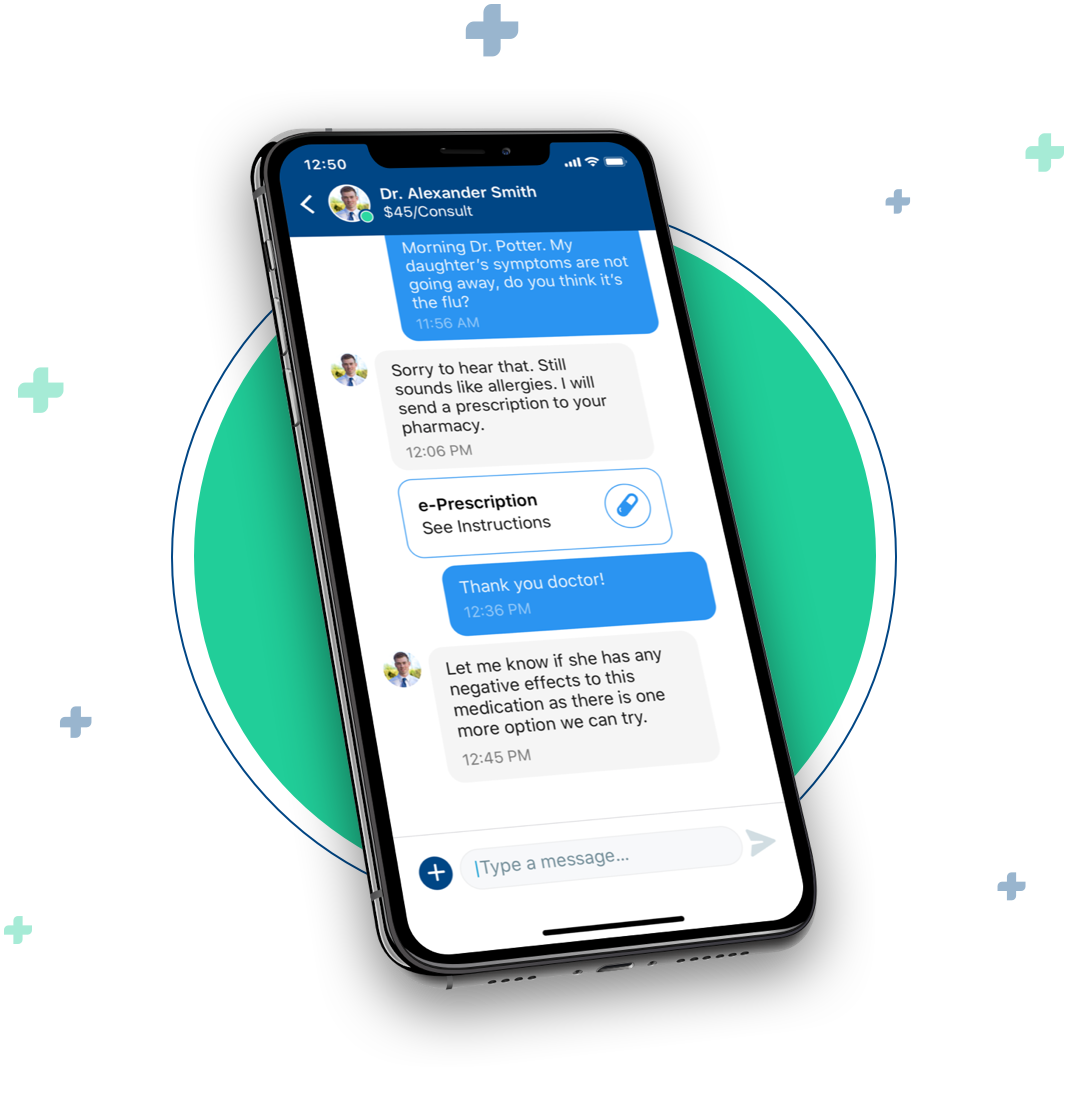Telemedicine for Doctors
As telemedicine continues to emerge and grow in healthcare, many doctors are looking at this as a way to provide both patient satisfaction and increase continuity of care. It’s no secret that doctors spend a sufficient amount of time following up with patients after they’ve left the office. Now, asking patients to return to the office for a simple follow-up visit is a thing of the past. For any appointments that don’t require a physical examination, telemedicine can be used, and that is where Direct Health’s secure messaging, call, and video platform can help.
Get Started with Direct Health
Start Treating Patients Today
Our enrollment process is quick, simple, and human-verified.
Telemedicine services provided by Doctors

Medication Management
Patients no longer need to have an in-person office visit to manage most of their medications. From birth control to antibiotics or antidepressants, telemedicine visits are an ideal solution for adjusting patient medications. It’s more efficient for both patients and providers without sacrificing physician compensation.

Lab Results and Screenings
Providers order multiple lab tests and screenings each day. For abnormal lab results, secure messaging and video allows doctors to discuss results with their patients without losing money on follow-up phone calls.

Provide Ongoing Care
For patients suffering from chronic conditions like diabetes, hypertension, or heart disease, telehealth helps keep patients better engaged in their care. Physicians are able to monitor symptom progression, adjust medications, and modify treatment plans without asking patients to return to the office.
Clinical use cases for Doctors using telehealth
Chronic condition patients often require multiple physician office visits each year. These are patients who have regimented treatment plans that are frequently adjusted and must be closely monitored by an existing provider. For patients with chronic conditions, the ability to securely message their primary care physician helps them remain consistent with their treatment plan. Using telemedicine can provide assisting medication adjustments, monitoring of side effects, lab/imaging result reviews, and overall treatment plan management. Primary care providers can also use telemedicine to share files applicable to a patient’s treatment plan so they can follow them easily.
Chronic conditions commonly managed through telemedicine for primary care include:
- Diabetes
- Hypertension
- Coronary Artery Disease
- Cardiac Arrythmia
- End Stage Renal Disease
- Hepatitis
- Asthma / COPD
- Obesity
- Oncologic co-morbidities
- Neurodegenerative diseases
Patients who receive yearly wellness exams are prime candidates for follow-ups over telemedicine. While the wellness exam itself requires a head-to-toe physical exam, following up on blood work and other screenings is ideal for a virtual telemedicine visit. These virtual visits also give physicians the opportunity to discuss how the patient can make smart lifestyle decisions in order to improve overall health.
Common wellness screenings ideal for telemedicine follow-up include:
- Colonoscopy / sigmoidoscopy results
- Cholesterol levels
- STD testing
- CBC results
- Blood glucose levels
- Liver function testing
- Pap smear results
- Blood electrolytes
Patients with a broad range of minor urgent care issues are increasingly turning to telemedicine for convenient access to healthcare providers from home. Direct Health enables these patients to receive care from their existing providers, ensuring full access to their medical records and providing continuity that is not possible with urgent care centers and on-demand telehealth services.
Common urgent care issues evaluated over telemedicine include:
- Cold and flu
- Allergies
- Sinus/Ear infections
- Sore throat
- UTIs
- Diarrhea and vomiting
The benefits of telemedicine for your patients
Easy access to care drives engagement
Frequent missed appointments and failure to adhere to treatment plans are among a few things that hurt the long-term health of patients. By making access to care less of a burden, patients become more engaged in their treatment plans. This has long-term benefits for patients, their families, and the healthcare system as a whole.
Staying out of the waiting room
Waiting rooms are the last place any patient wants to be, especially if they are surrounded by others who may be contagious. They’ll appreciate the option to connect with you virtually from their home or office.

FAQs about telemedicine for Doctors
The best telemedicine software for Doctors
Our handy buyers guide for telemedicine solutions

Fully HIPAA compliant
All telehealth software must be secure and HIPAA-compliant, because sensitive patient information is being exchanged. Software like Skype and FaceTime, for example, are not HIPAA-compliant and should never be used for patient encounters.

Appointment records
Simply for record keeping and on the off-chance you are audited, select telemedicine software that provides a thread of every interaction (including secure messages sent between provider and patient). This audit trail, combined with any thorough clinical documentation that can be exported to your EHR, is a telemedicine best practice.

Seamless EHR integration
Any telemedicine software should fit seamlessly into your existing practice workflow. The best way to ensure this is to select a product that integrates directly with your electronic health record system with the ability to import your existing patient list.

Legal and malpractice support
Telemedicine is heavily regulated. And these regulations vary state by state and are changing rapidly. In order to adhere to these laws and industry best practices, it’s important to find a telemedicine platform that offers comprehensive legal and regulatory support, and even malpractice insurance.
